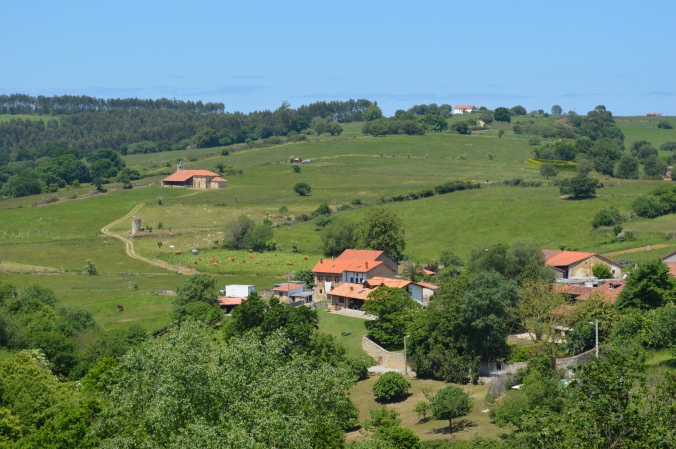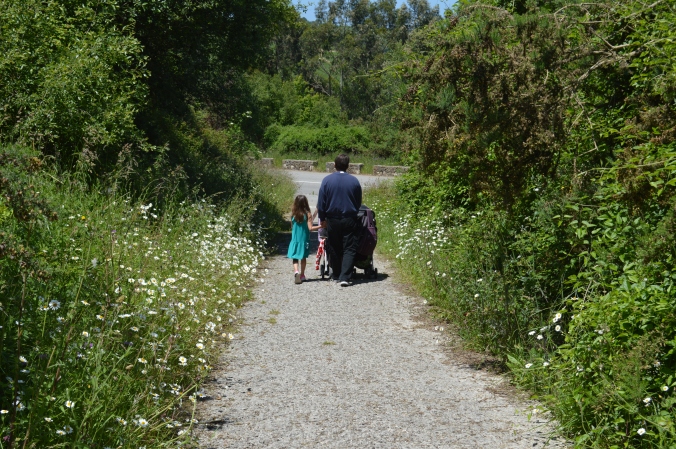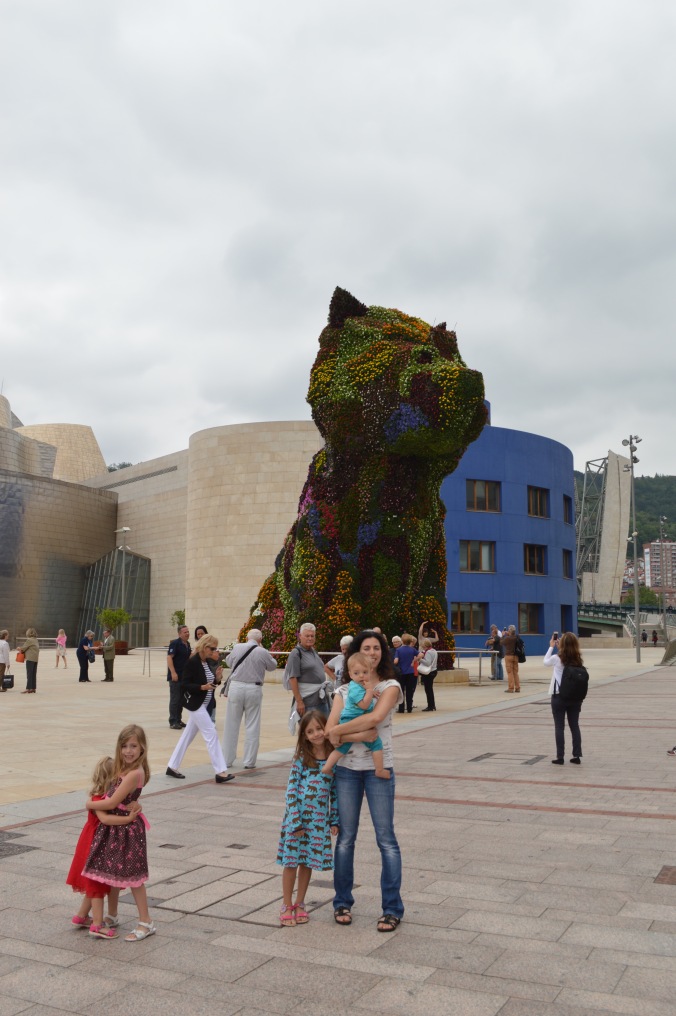I was taking an anthropology class in high school when I first heard of the Altamira Caves. In that class, I learned about many of the wonders of ancient peoples that exist in our world; the Nazca lines, Chichen-Itza, the cave dwellings at Mesa Verde, the most ancient of cave paintings ever discovered. “I must see them someday!” I was saddened to learn a few years later that the caves of Altamira and Lascaux were closed to visitors. It was a protective measure, but saddened me greatly. Knowing I couldn’t go inside and see the paintings in person, the Altamira caves fell off of my travel list.
Then, when we were planning our trip to Spain, my husband insisted that we would love Santillana del Mar and we must stay there for a few days. Well, he was right! We did love Santillana del Mar. I’m so glad that we didn’t miss that charming little village. While I was reading through our guidebook to see what sites there are in Santillana, I came across a reference to the Altamira Cave Museum. I hadn’t realized our travel plans would take us so close to the Altamira Caves! The exact location of the caves is kept secret to preserve them, but in the museum they have created an exact replica with every bump, crack, and image from the original cave site. I was so excited! A replica is a little less exciting. But truthfully, with small children in tow who would probably be scared of going deep into some dark caves, an exact replica is probably a better idea anyway.
To get to Museo de Altamira, you must walk roughly a mile and a half through the Cantabrian countryside. It is mostly uphill from Santillana del Mar. My husband was my hero. He pushed our double stroller the whole way there. Our children started complaining as we began our hike. But it was so beautiful that they soon forgot to complain. This picture does not adequately convey the feeling of standing in the warm sun with a cool breeze from the Atlantic carrying a briny smell.

Walking through the Cantabrian countryside was like moving through a bucolic dream. Red roofed houses and churches dotted the green landscape.

Cows and horses munched sweet grass in their pastures as we passed along our way, while white, puffy clouds floated in a blue sky.

At one point we had to walk down this rocky path with daisies and other wildflowers growing in abundance.

My husband ran on ahead to make sure we were still heading the right direction, so I took the time to make some daisy chains for my little girls. Those who drive to the museum in a big tour bus really miss out on a beautiful experience.

And finally we reached the museum! There are two portions of the museum, the cave replicas and the more traditional museum about the caves and their history. When you pay the entrance fee you are given time stamped cards for entrance to the cave replica. We were lucky that it was not very busy on the day we went. We were the only ones in the caves at our time.
As you enter the cave replica, there is a video showing what the people who lived there might have looked like, cooking and performing other tasks at the entrance to their cave. Then, it simulates an earthquake and cave-in, showing the entrance to the cave being closed off by falling debris. This scared my five year old, who continued to ask if there would be an earthquake the remainder of our visit to the museum.
Next, you move down some metal ramps into the area where the cave paintings are replicated. They were beautiful! The natural outcroppings, bumps and bulges of the cave were an integral part of the pictures themselves. The images are really three dimensional, and could be considered sculpture using the curves of the rock instead of merely paintings. There were a variety of pigments and techniques used to create the paintings. Handprints in black and red dot the ceiling. Negative space handprints were created with red pigment being blown around the hand in a sort of airbrush technique. Remembering that this is what the actual paintings looked like, it was an incredible experience.
The museum was very informative, and had many interactive displays that my children enjoyed. There was very little English used in the museum, so brush up on your Spanish or have a Spanish speaking companion with you if you really want to learn about the history of the caves.
There are some caves with ancient paintings in the area that you can still visit. With young children, we decided to forego those on this trip. Maybe next time. But still, if you are anywhere near Santillana del Mar, take a hike through the magical countryside and visit Museo de Altamira.







